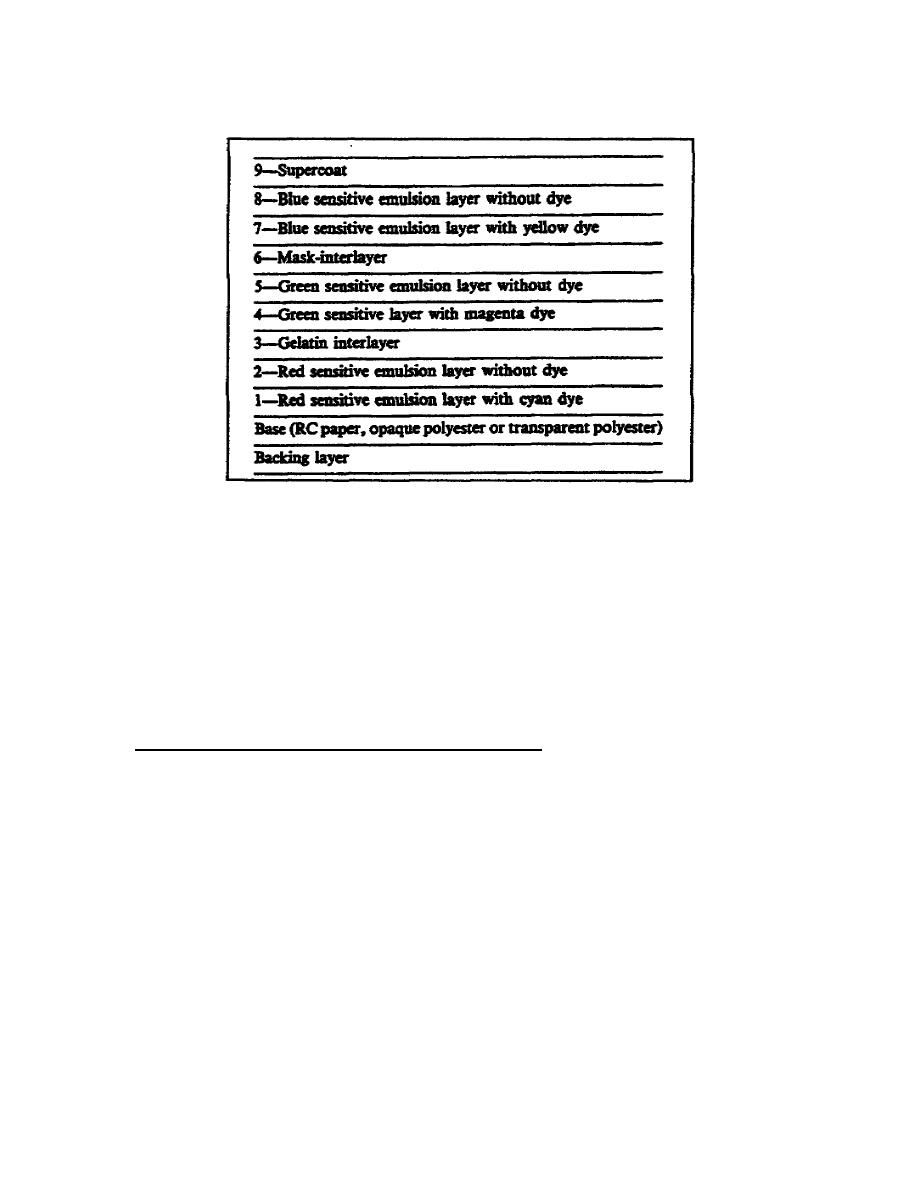
transparent polyester base. All the Cibachrome materials have nine layers
arranged as shown in figure 5-4.
Figure 5-4.
Nine layers of Cibachrome materials
There are two light-sensitive silver halide emulsion layers responding to
each of the three primary colors. Only one layer contains the appropriate
image dye. The dye-free layers (2, 5, and 8) influence the bleaching of the
adjacent dyed layers (1, 4, and 7) and so increase the photographic speed
without increasing the contrast.
The masking layer (6) between the blue and green sensitive layers controls
the bleaching process of the yellow dye in the blue sensitive emulsion layer
depending on the exposure of the green and red sensitive layers. With this
interlayer effect, a mask is formed which improves the color rendition.
8.
Printing with Silver-Dye Bleach Materials.
Any good quality enlarger equipped with a color-corrected lens and a filter
drawer or a color head having a suitable light source (halogen, projection
lamp, or pulsed xenon with proper correction filter) can be used to expose
Cibachrome materials.
An ultraviolet-absorbing filter must always be
inserted in the light path.
When using Cibachrome as with conventional reversal color papers, you should
have available a standard transparency which can be used to evaluate the
entire photographic reproduction system.
When using Cibachrome materials,
the following considerations should be kept in mind.
5-10
SS0514



 Previous Page
Previous Page
